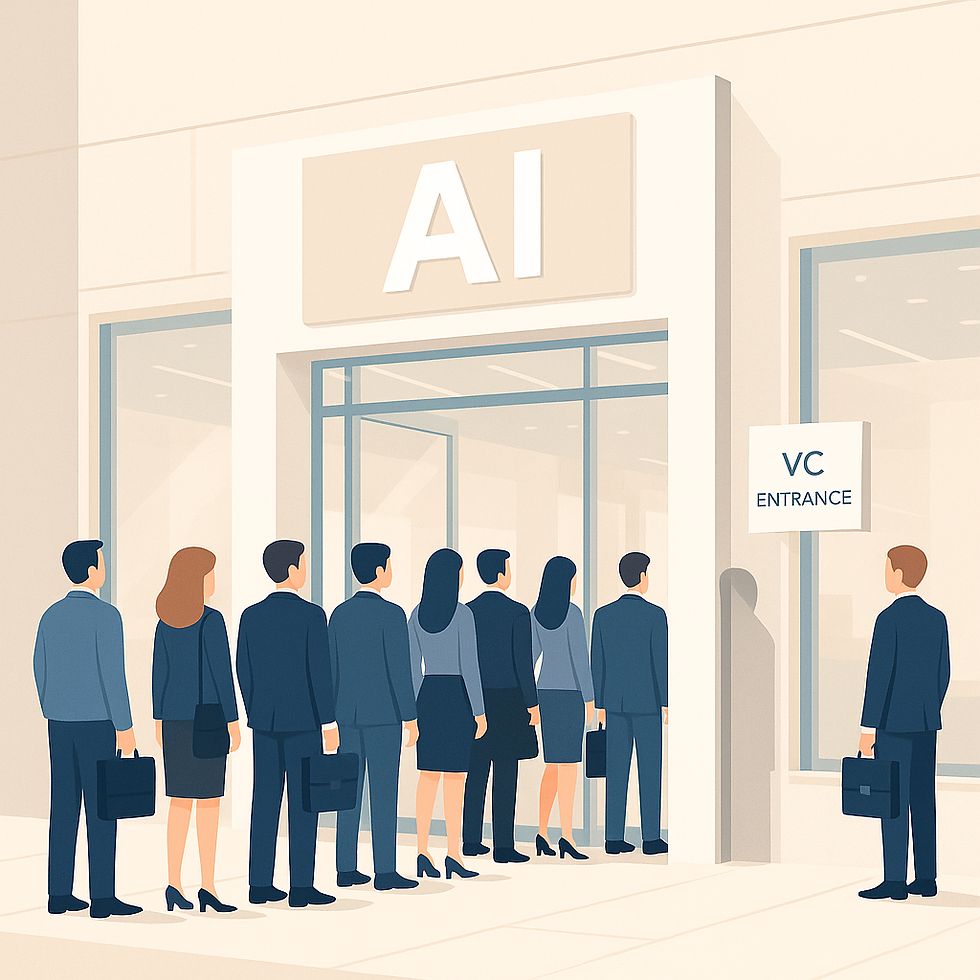The AI valuation race: Open AI, xAI Anthropic and the rest
- Niv Nissenson
- Aug 22
- 2 min read

The AI sector has seen unprecedented valuations, with numbers once unimaginable outside of Big Tech. In fact, Thinking Machines recently raised the largest seed round in history, a signal of just how much investor capital is chasing the next AI breakthrough. Today, nearly half of all venture capital spend is flowing into AI, a level of concentration rarely seen in any single sector.
In less than a year, the valuations of the leading players have surged into the hundreds of billions. M.G. Siegler of Spyglass is tracking the AI valuation race:
OpenAI: $500B on the Secondary Market
OpenAI continues to set records. The company is raising $40B at a $300B valuation, while allowing employee secondary sales at a $500B valuation — the highest ever for a still-private firm.
Anthropic: Racing Toward $175B
Anthropic’s valuation has climbed from $61.5B earlier this year to an expected $170B–$175B as it doubled its latest raise from $5B to $10B. That puts it squarely in contention with OpenAI as a leading independent AI research company.
xAI: Musk’s Bet Tops $100B
xAI, after merging into Musk’s broader “X” empire, is now valued north of $100B. Reports suggest it is seeking a valuation as high as $170B–$200B, though those terms haven’t yet closed.
Other Players on the Rise
Safe Superintelligence — Holding steady at $32B, though growth has slowed after its CEO departed for Meta.
Perplexity — Valuation leapt from $9B to $18B in weeks, fueled by a high-profile browser launch and ties to Apple.
Thinking Machine Lab — Reportedly at $12B, up from $9B, with Meta aggressively trying to poach its researchers.
Harvey — The AI legal startup grew from $3B to $5B.
Periodic Labs — A new entrant, already at $1B thanks to a16z-led funding.
TheMarketAI.com Take
At this stage, AI investment isn’t just — or even mostly — about the technology. It’s about a race for market share. OpenAI appears to be in the lead, and in AI, distribution matters: the companies that control users, data pipelines, and platforms (think search engines or browsers) also control the resources that fuel the next wave of model development. Market share and data access could become as strategic as the underlying research itself.
That said, small AI companies still matter — perhaps more than ever. They continue to drive breakthroughs in design, talent, and specialized use cases. Meta’s aggressive poaching of top researchers shows how scarce top-tier talent is. And Apple, which has yet to articulate a clear AI strategy, could very well choose to make its move through acquisitions — snapping up smaller firms to quickly bring talent and technology in-house.


